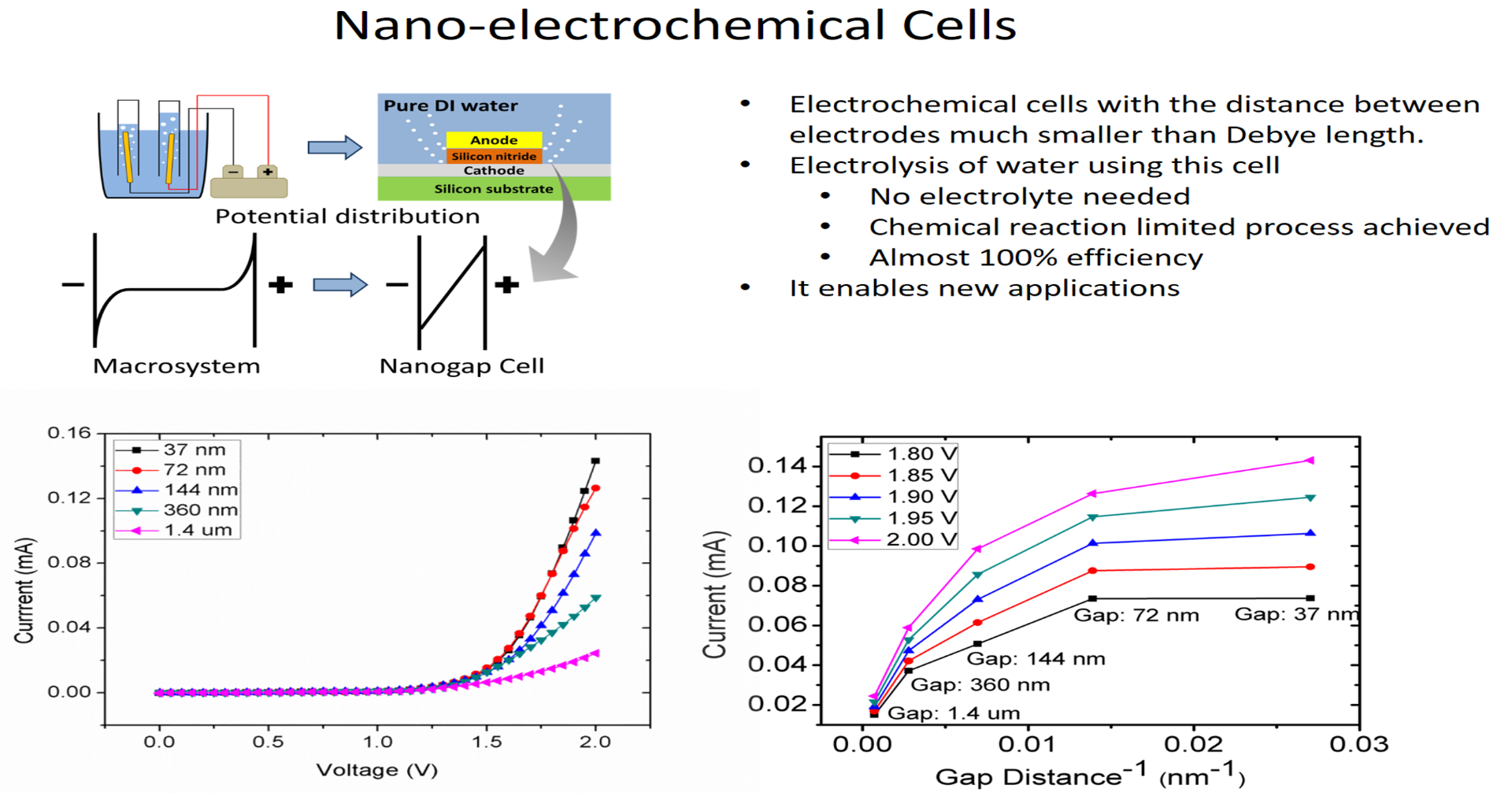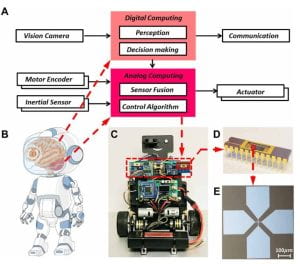Robotics
Today as robotic applications expand from the precisely regulated environments of automated manufacturing factories to the less constrained real world shared with various moving objects. The accompanying control and decision tasks increase the computational load. The increased load raises the requirements for the hardware inside robotics. Indeed, with the development of artificial intelligence and machine learning, some control or decision problems are solved faster than before. However, these digital-based methods are not fast enough. We build various ultrafast computing systems using memristors which enable efficient computation when and where it needs to deal with complex tasks.
A Memristor-based Hybrid Analog-digital Computing Platform for Mobile Robotics
Our group builds an analog controller using memristors that can maintain balance more efficiently and quickly than existing control systems.
The memristor-based hybrid analog-digital computing platform. (A) Schematic illustration of hybrid analog-digital computing platform. (B) Schematic representation of the biological inspiration from the brain structure. In the hybrid analog-digital computing platform, the analog component acts as the cerebellum that controls the motion of the robot, whereas the digital component acts as the cerebrum running the high-level algorithms. (C) Image of the mobile robotic system (i.e., the mobile inverted pendulum) in this work. (D) Image of the memristors packaged on the chip carrier. (E) Optical microscope image of the fabricated Pt/ Al2O3/Ta/Pt cross-point memristor; scale bar, 100 um.
Bio-inspired Hybrid Computing Platform for Micro-unmanned Vehicles
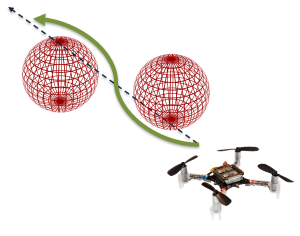
Micro-Unmanned Aerial Vehicles. The high-performance memristors, ASICS, and control algorithms are integrated to solve complex control problems.

High-performance memristor array. 128*64 memristor array (Linewidth: 2um; Gap: 5um)
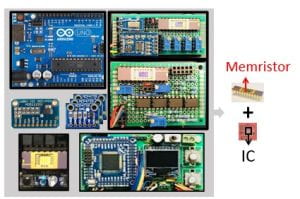
System Miniaturization.
Nanophotonics
Heterogeneous Optical Metastructures
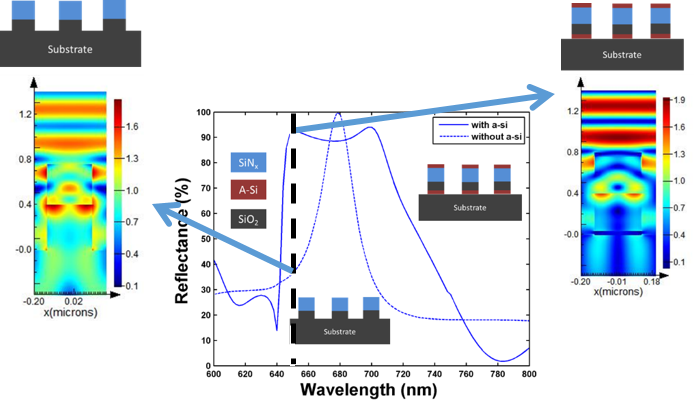

Materials challenge for metastructures at visible ranges.
- High-refractive-index and low-loss materials needed
- No such material at visible range due to the general trend of high index, low energy bandgap or low-index, high bandgap
We solved this by using heterogeneous materials.
- High-index, high-loss materials + low-index, low-loss material
- Optical modes do not overlap with the high-loss materials
- Reflection bandwidth of >90% reflectivity increased x10.
Yao, Y., Wu, W. (2017), “All-Dielectric Heterogeneous Metasurface as an Efficient Ultra-Broadband Reflector” Advanced Optical Materials. DOI: 10.1002/adom. 201700090.
Variable-voxel 3D printing
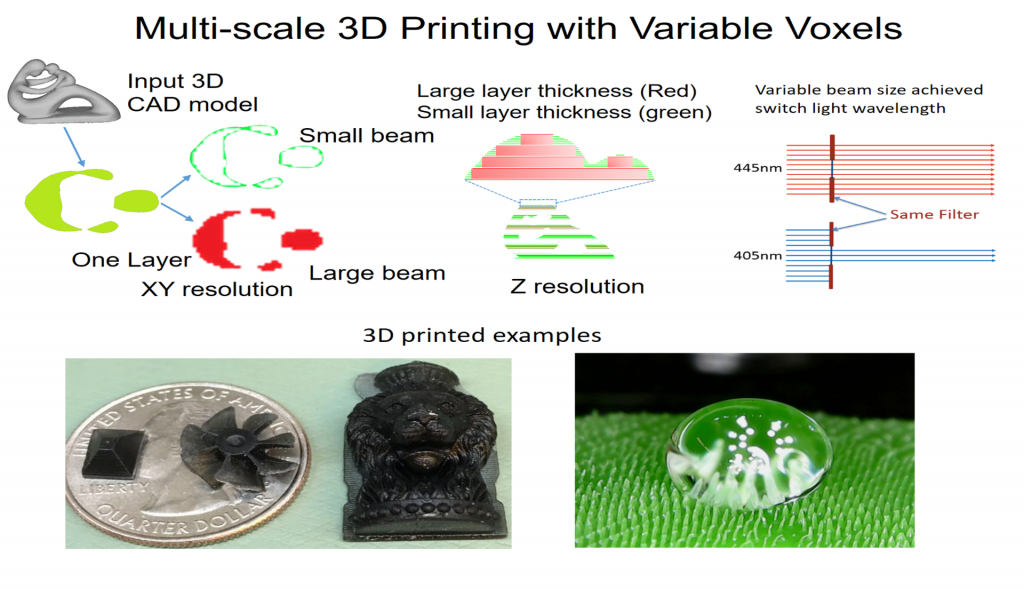
We invented a technology to improve 3D printing (stereo lithography)
- Better resolution, 5x speed improvement
- Multi-scale fabrication
Plasmonics
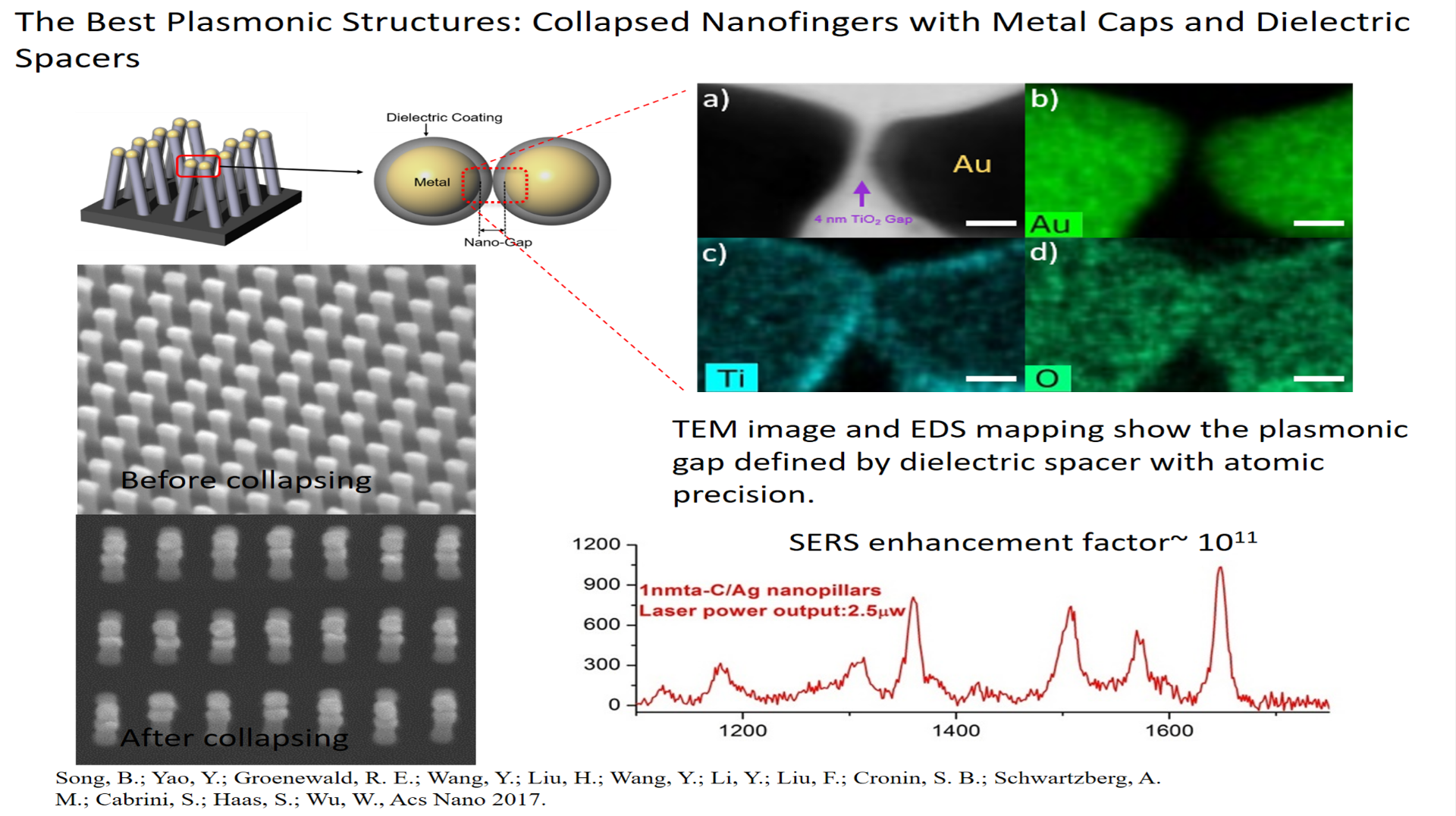
We invented a technology to fabricate the plasmonic structures with the highest field enhancement
- Large area, low cost, high reliability, high precision
- Open the door for numerous applications
Song, B., Yao, Y., Groenewald, R. E., Wang, Y., Liu, H., Wang, Y., Li, Y., Liu, F., Cronin, S. B., Schwartzberg, A. M., Cabrini, S., Haas, S., Wu, W., “Probing Gap Plasmons Down to Subnanometer Scales Using Collapsible Nanofingers” ACS NANO.DOI: 10.1021/acsnano.7b01468.
Nano-electrochemistry cells
